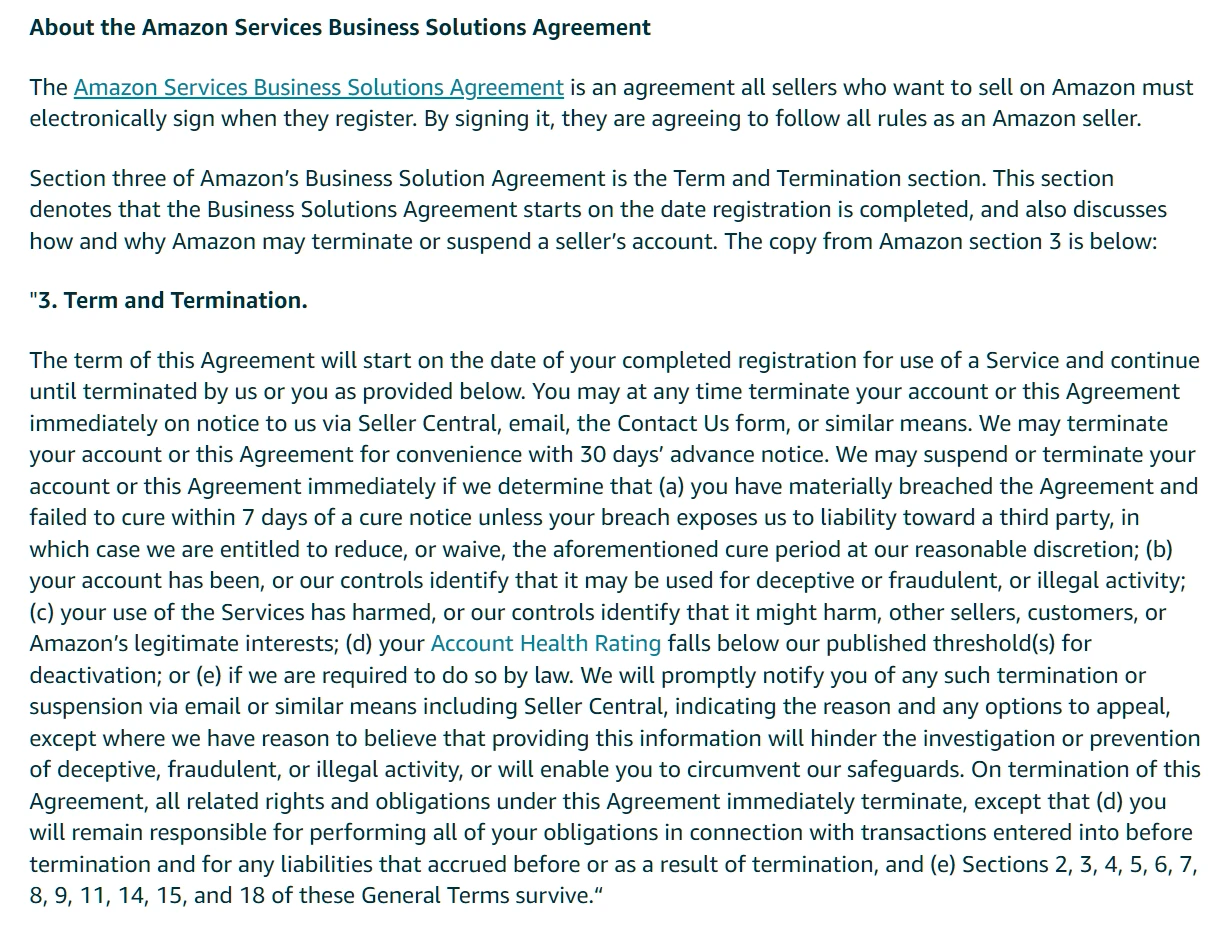Jun 19, 2025
Amazon Section 3 Violation In-Depth Guide
- What is an Amazon Section 3 violation?
- Common causes of Amazon Section 3 Violation include:
- To avoid Section 3 Violations on Amazon, it is crucial to take several proactive steps:
- When you receive a Section 3 Violation on Amazon, the consequences can be serious:
- If you receive a Section 3 suspension notice from Amazon, follow these steps to handle it effectively:
- How Shopkeeper can help?
One of the biggest challenges for Amazon sellers is dealing with an Amazon Section 3 Violation, which can be particularly scary and confusing, especially if you don’t know why you were suspended.
Knowing Amazon's policies is crucial, but Section 3 of Amazon's Business Solutions Agreement can be quite complex and unclear. In this article, we will explain what a Section 3 violation is, discuss its causes, share tips on preventing it, and provide guidance on how to restore your account if it gets suspended.
For expert guidance and tailored strategies to address and resolve Section 3 violations, our team at Shopkeeper is ready to assist you.
See here: Advisory Services
What is an Amazon Section 3 violation?
It’s always helpful to start with Amazon’s terms of service, so let’s take a look at section 3 in the screenshot below:

If you violate Amazon policies, they might suspend your ability to sell and use services like Amazon Prime or Amazon KDP with or without notice. This suspension, called a Section 3 suspension, happens when you engage in activities that are not allowed under Section 3 of Amazon's seller policies. Reasons for this can include selling fake or restricted items, manipulation of reviews, or breaking Amazon's terms of service.
Common causes of Amazon Section 3 Violation include:
-
Selling counterfeit or illegal items
-
Manipulating reviews
-
Infringing on intellectual property rights
-
Providing poor customer service
-
Selling low-quality products
-
Not adhering to fair pricing policies
-
Engaging in other forms of fraudulent behavior
To avoid Section 3 Violations on Amazon, it is crucial to take several proactive steps:
-
Familiarize yourself with Amazon's policies and guidelines to ensure compliance.
-
Ensure all products listed meet Amazon's standards and regulations.
-
Adhere strictly to seller guidelines and best practices recommended by Amazon.
-
Regularly monitor your account health metrics and address any issues promptly.
-
Responsively engage with customer inquiries and feedback to maintain satisfaction.
-
Stay informed about changes in Amazon's policies and marketplace dynamics.
-
Seek professional advice from experts like Shopkeeper if you have any uncertainties or complexities in your operations.
By diligently following these strategies, sellers can significantly reduce the risk of encountering Section 3 Violations on Amazon.
When you receive a Section 3 Violation on Amazon, the consequences can be serious:
-
Amazon may suspend or terminate your account immediately for breaches, or provide a 30-day notice for convenience termination. If notified of a breach and unable to fix it within seven days, your account could be suspended.
-
A Section 3 Violation can lead to a significant loss of income and harm your business's reputation.
-
Amazon may remove listings associated with policy violations, making those products unavailable for purchase. This can reduce your visibility and sales on the platform.
-
In case of account suspension, Amazon may withhold funds, including payments for previous sales. This can cause financial strain.
-
For severe violations like intellectual property infringement or fraudulent activities, Amazon may pursue legal actions against you.
Amazon might require a detailed plan of action (POA) to reactivate your account and prevent future violations.
Getting a Section 3 Violation on Amazon can thus have wide-ranging repercussions on your business operations and reputation.
If you receive a Section 3 suspension notice from Amazon, follow these steps to handle it effectively:
-
Read and Understand: Carefully read the suspension email to understand the reason behind it. Amazon typically includes details and evidence, so review these thoroughly.
-
Gather Evidence: Collect any evidence that supports your case and contradicts the suspension reason if possible.
-
Submit an Appeal: Respond promptly by submitting an appeal through Amazon's Seller Central. Acknowledge the suspension reason, provide a detailed plan of action (POA) to resolve the issue, and prevent future violations.
-
Be Truthful: Amazon values honesty and transparency. Take ownership of the situation, demonstrate your commitment to improvement, and refrain from blaming others for the suspension.
Handling a Section 3 Violation requires proactive communication and a constructive approach to resolve the issue with Amazon.
How Shopkeeper can help?
When facing account suspensions or dealing with competitor challenges, seeking expert guidance can help navigate Amazon's intricate policies and procedures successfully.
Shopkeeper has a professional team of experts ready to assist you through these challenges. Our experienced consultants can provide tailored advice and effective strategies to address and resolve Section 3 violations. If you find yourself in such a situation and need guidance, Shopkeeper provides top-tier Consultation Services tailored to your needs. Don’t let Section 3 violations intimidate you – let Shopkeeper assist you in resolving any issues effectively!
Explore our services: Consulting and Advisory



